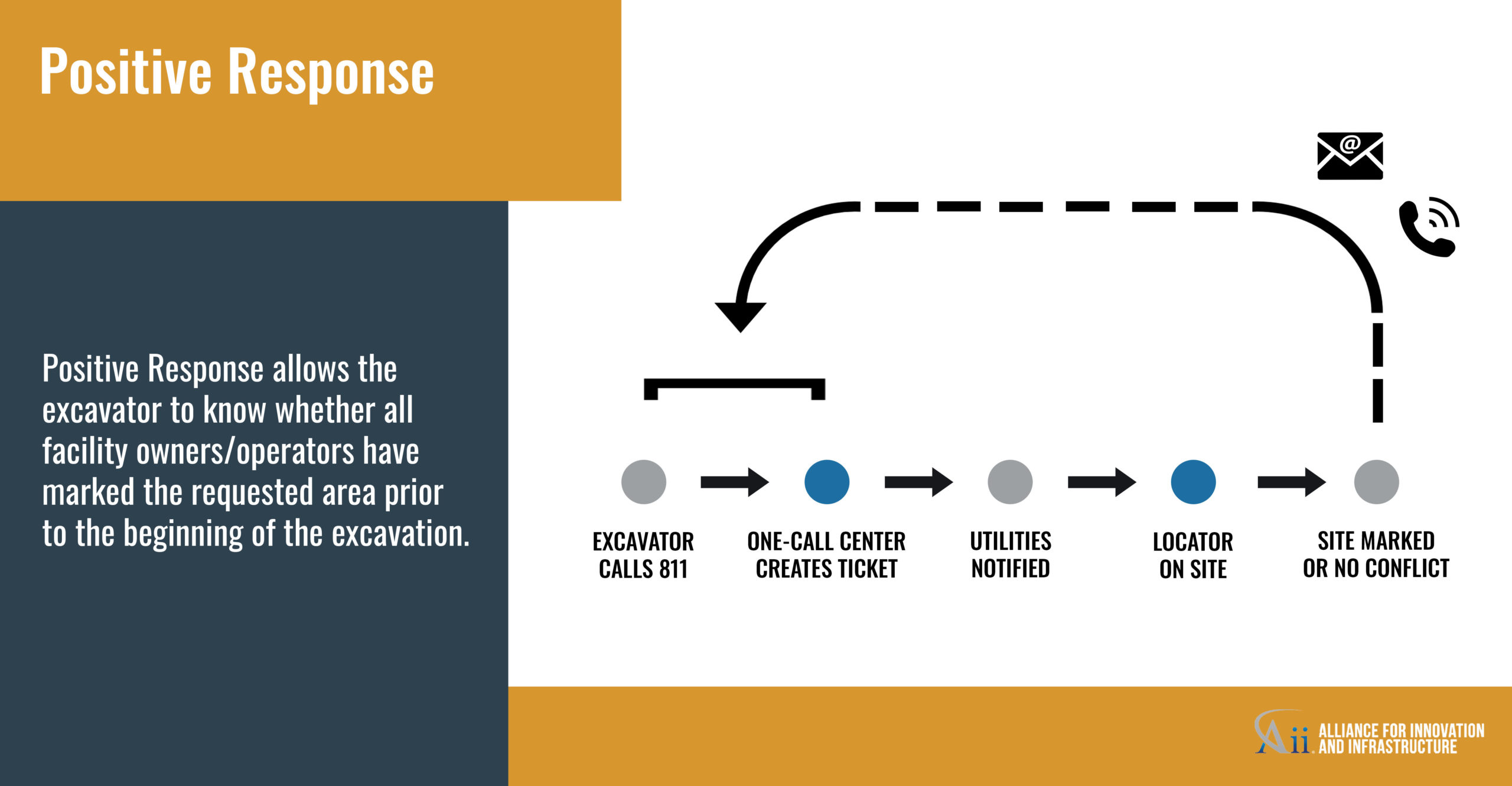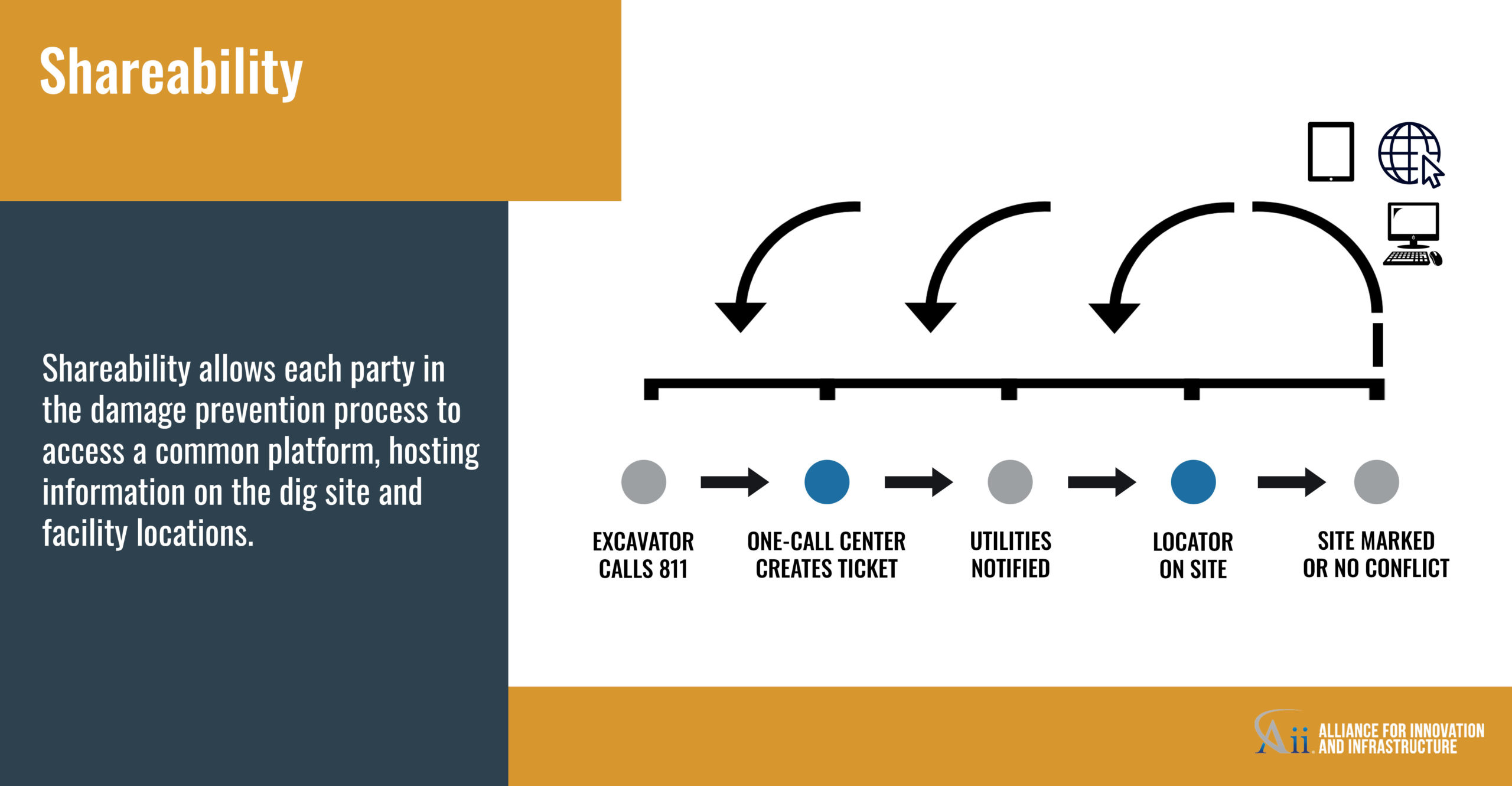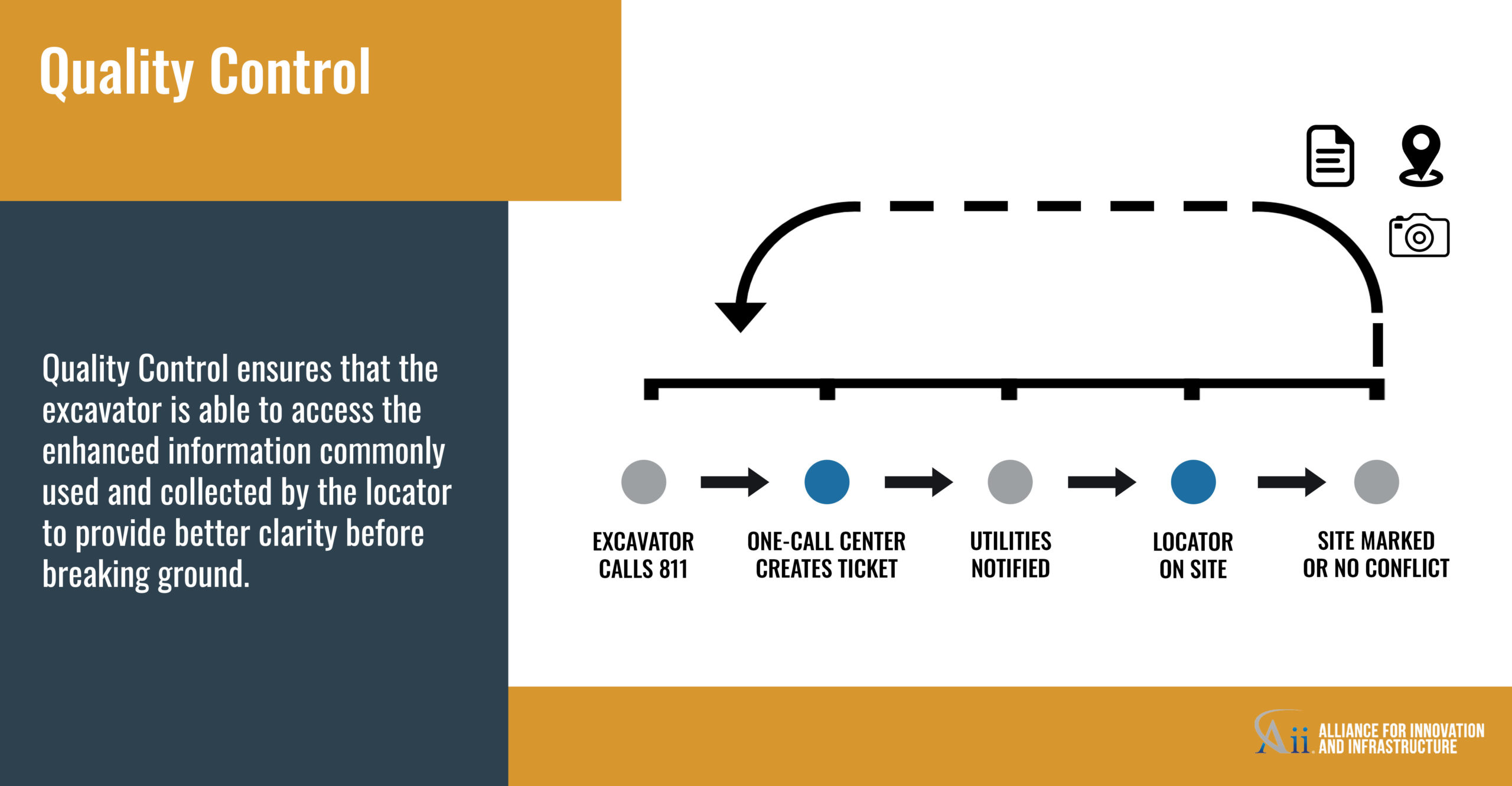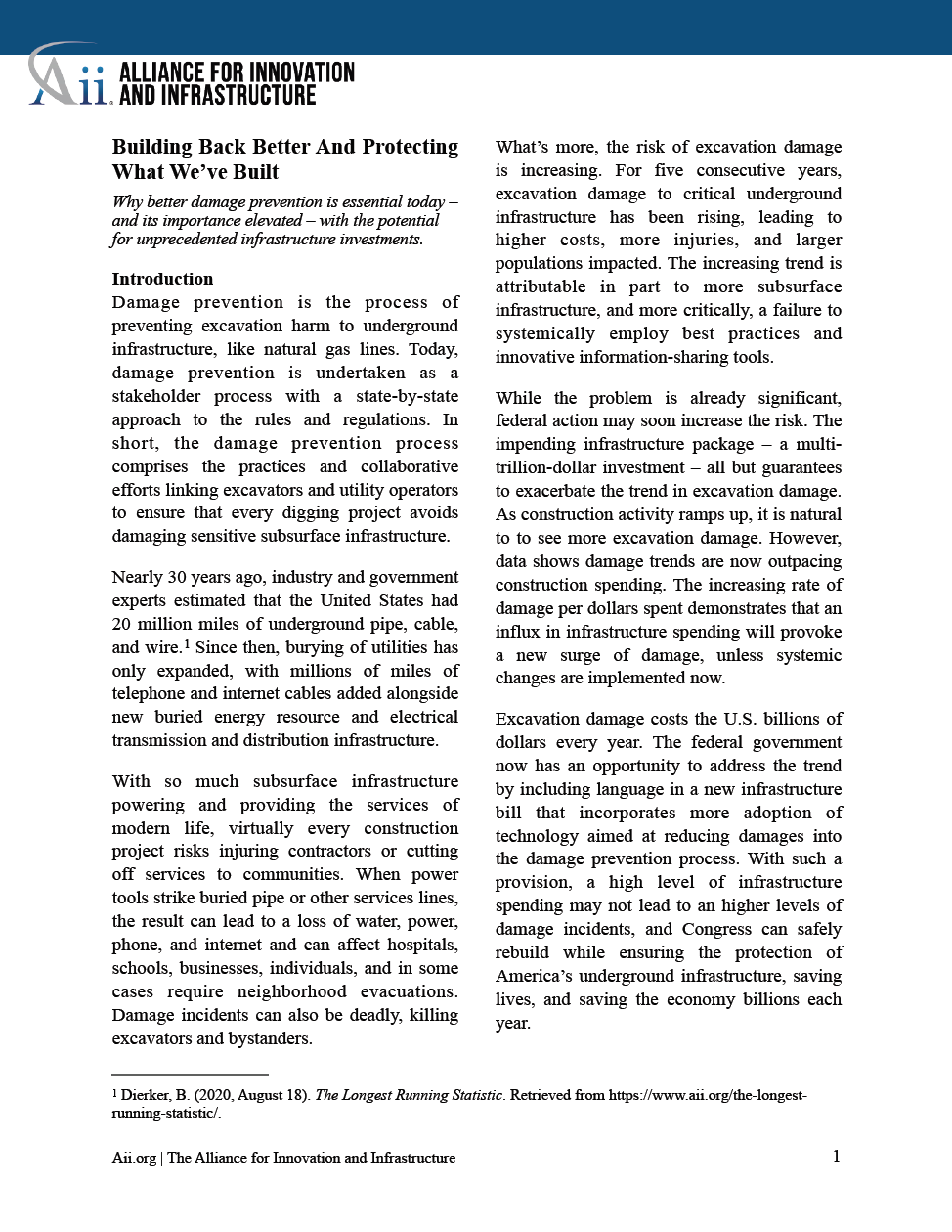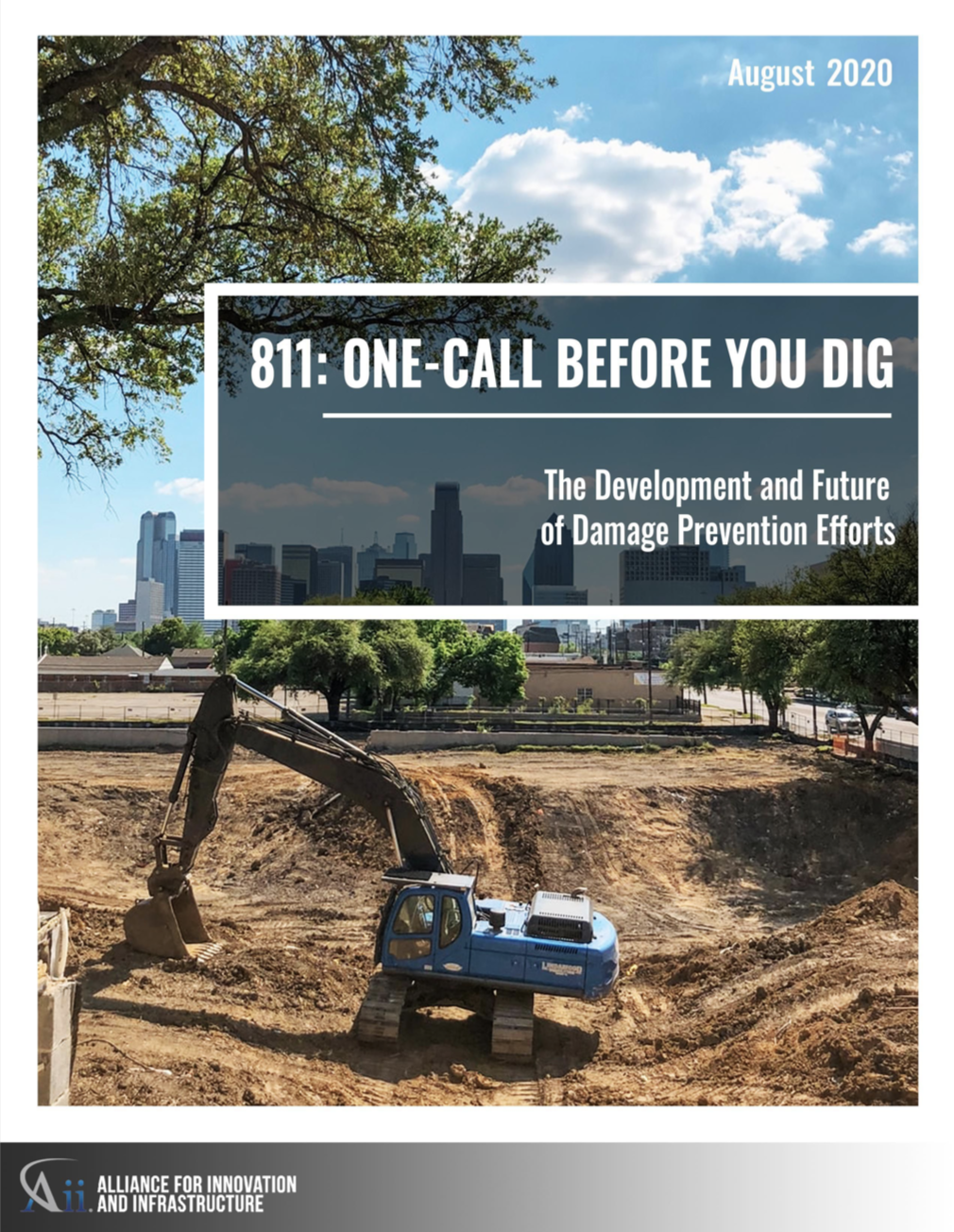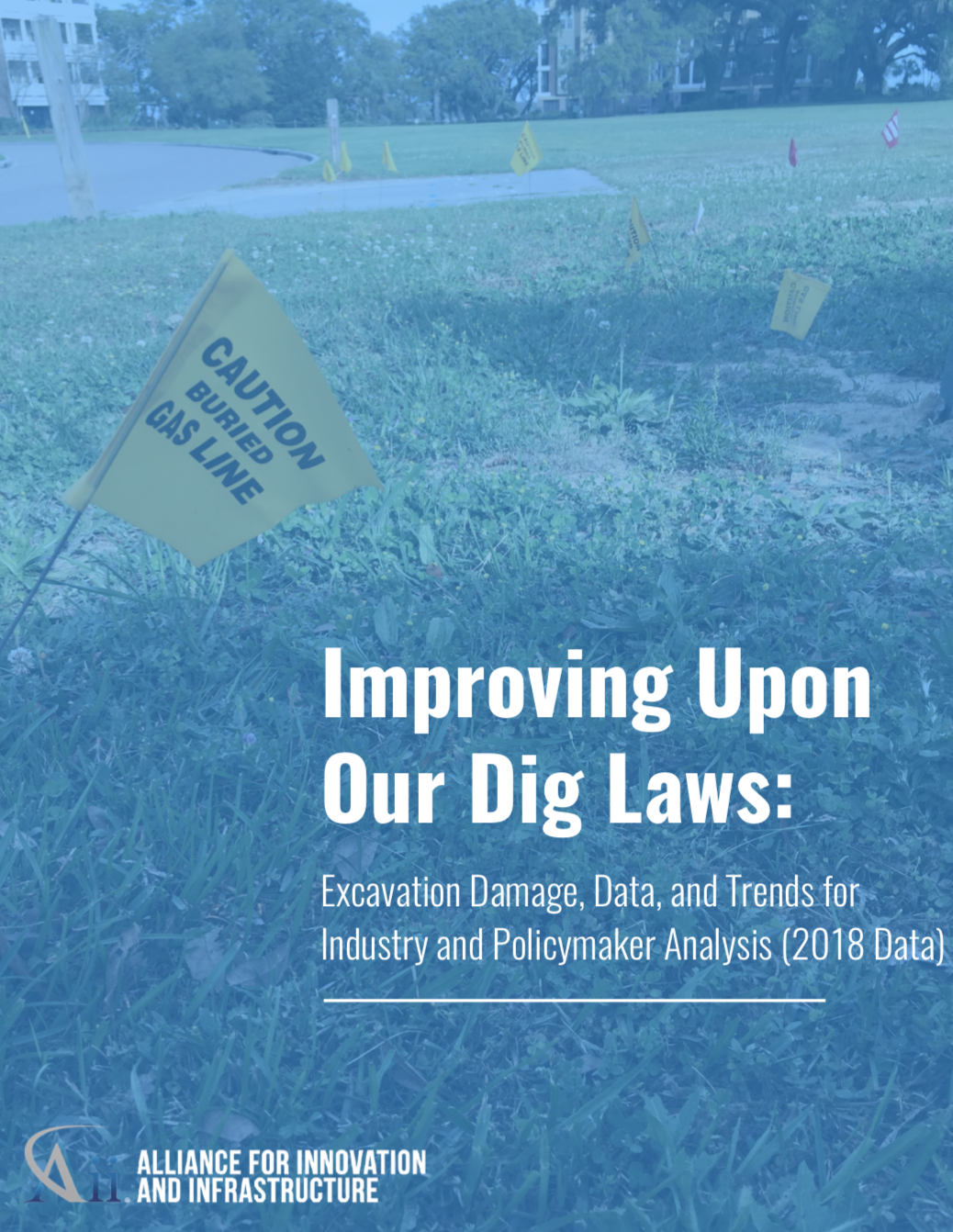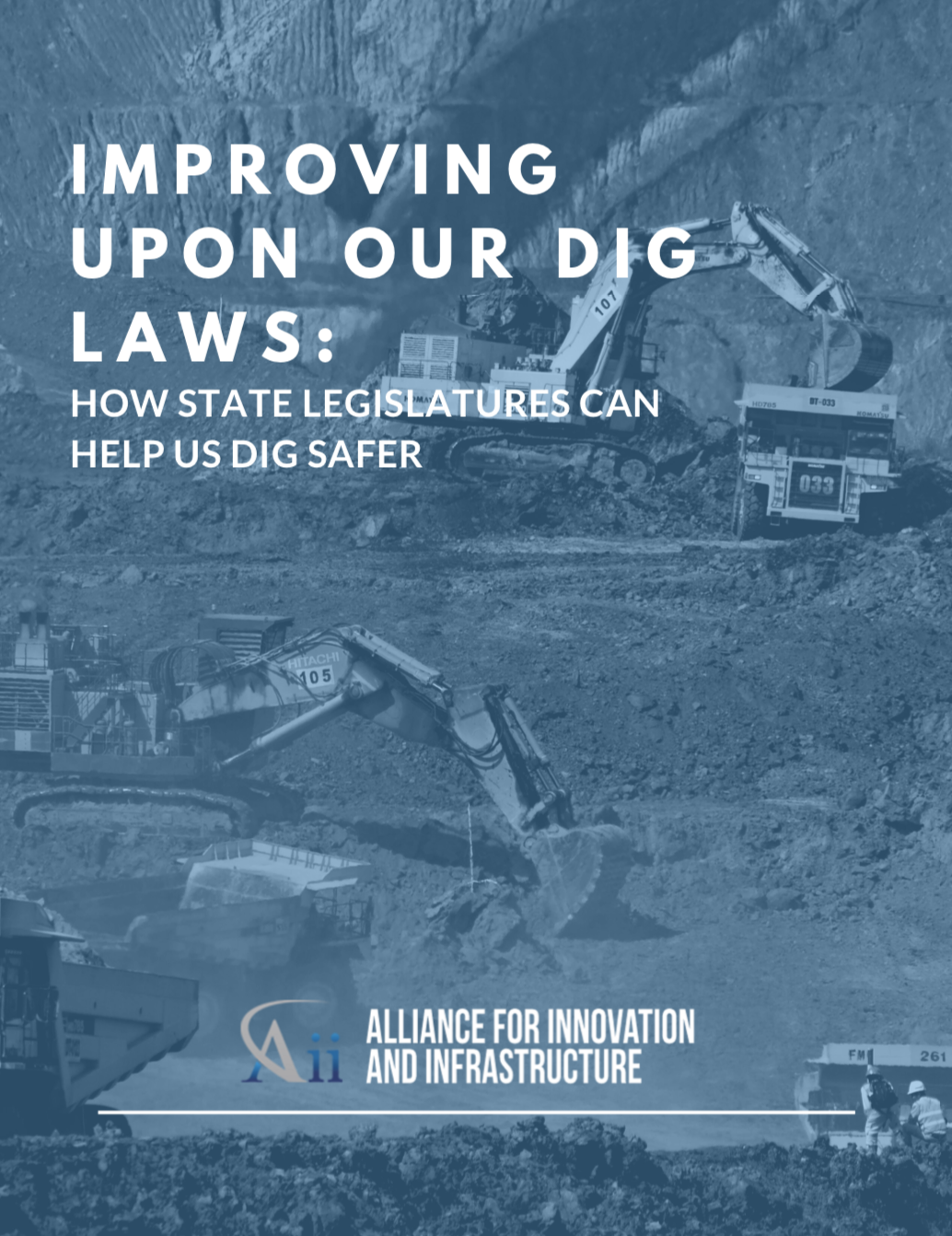2020 Report Card
Our 2020 Damage Prevention Report Card has been released! Click here to see how each state is rated in its approach to damage prevention and excavation safety.
Why Does It Matter?
The latest data shows that excavation damages are rising year-over-year and that in 2019 alone, excavation damage cost the U.S. over $30 billion. The same study suggests the true cost could be as high as $60 billion, while other estimates find damage to underground utilities harms the U.S. economy by as much as $50 billion to $100 billion annually. More alarmingly, since 2010, excavation damage along pipelines has led to 196 deaths and injuries. This does not account for the costs, injuries, and death from striking the millions of miles of nonpipeline facilities including phone lines, Internet cables, electrical wires, water lines, sewage, and more.
The technology needed for more effective damage prevention exists today and is inexpensive, reliable, and ubiquitous – but many states are not incorporating the technology imbedded in the basic tools of modern life (e.g. cell phones and tablets) into their damage prevention laws.
Data shows that damage incident rates will decrease significantly if states update from older techniques for mapping and marking the locations of underground facilities and adopt better and newer technology to facilitate how this information is gathered and shared among facility owners, excavators, One-Call centers, and locators.
We created this stoplight report card to help track which states, through their laws and regulations, use up-to-date technologies to enhance communications practices by ensuring all of the necessary information is shareable, and available for on-site quality control.
The intent of this report card is not to be used as a tool for criticizing state programs. Its purpose instead, is to shine a light on states that are moving in the right direction and to draw attention to areas where all states could improve their laws, regulations, and best practices.
What Does The Report Card Measure?
Included in a 2017 Pipeline and Hazardous Materials Safety Administration (PHMSA) report to Congress was a study demonstrating that the use of GPS and mapping technologies reduced excavation damage incidents by as much as 67 percent. Known as Enhanced Positive Response (EPR), that technology can be understood as comprising three chief components: positive response, shareability, and quality control. Taken together, these three components can help reduce human error and miscommunication about the presence and location of underground facilities at an excavation site, thereby reducing excavation damage incidents.
Examining The Data by State
The report card is based on an analysis of every state’s damage prevention statutes, as well as the implementing regulations in those states that have them. We have also included information on voluntary, encouraged, or pilot programs by the various One-Call centers that are not mandated in law. The analysis is focused the three key components of EPR, rated individually:
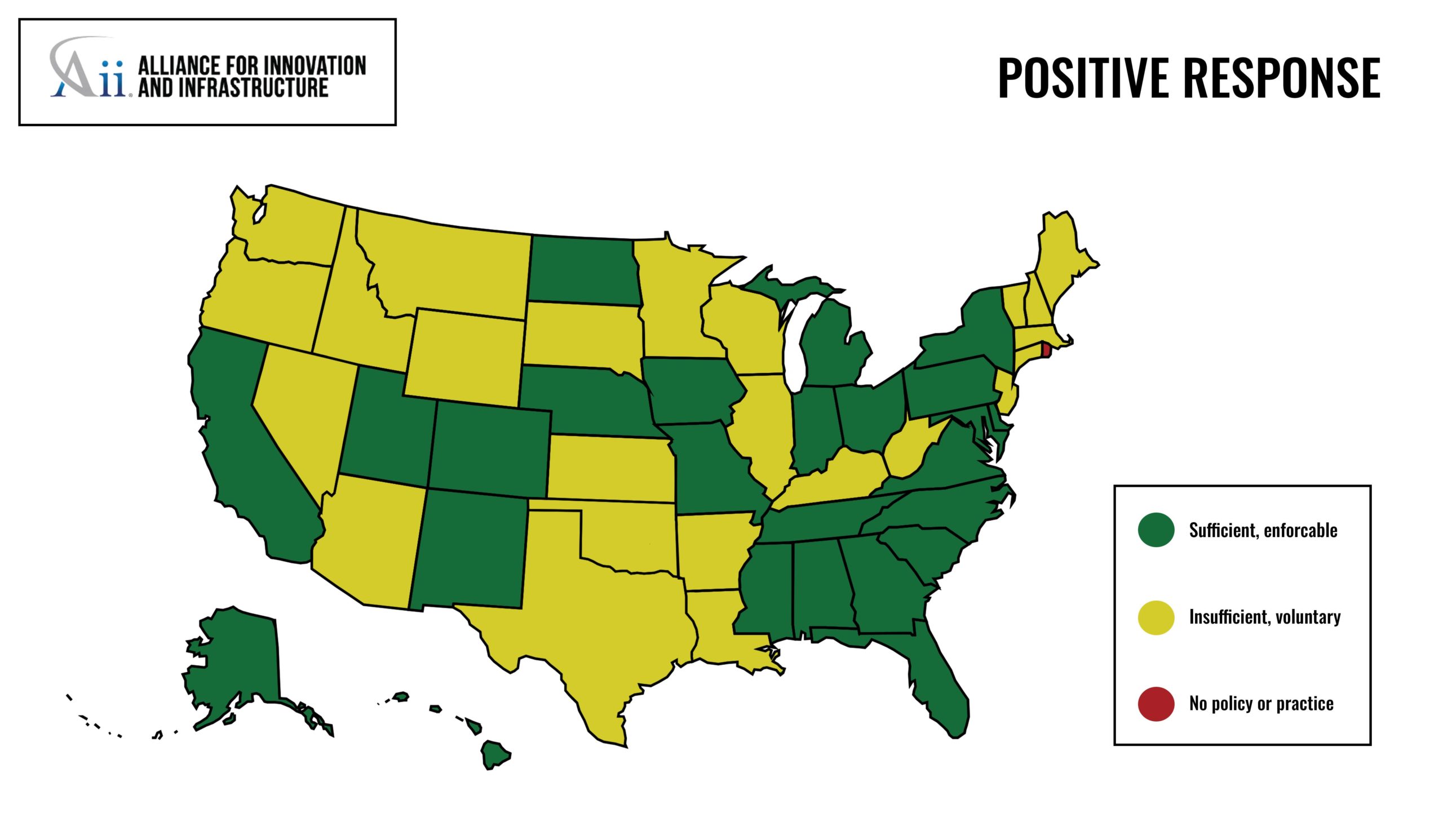
Positive Response
Does the state have a sufficient positive response system in place?
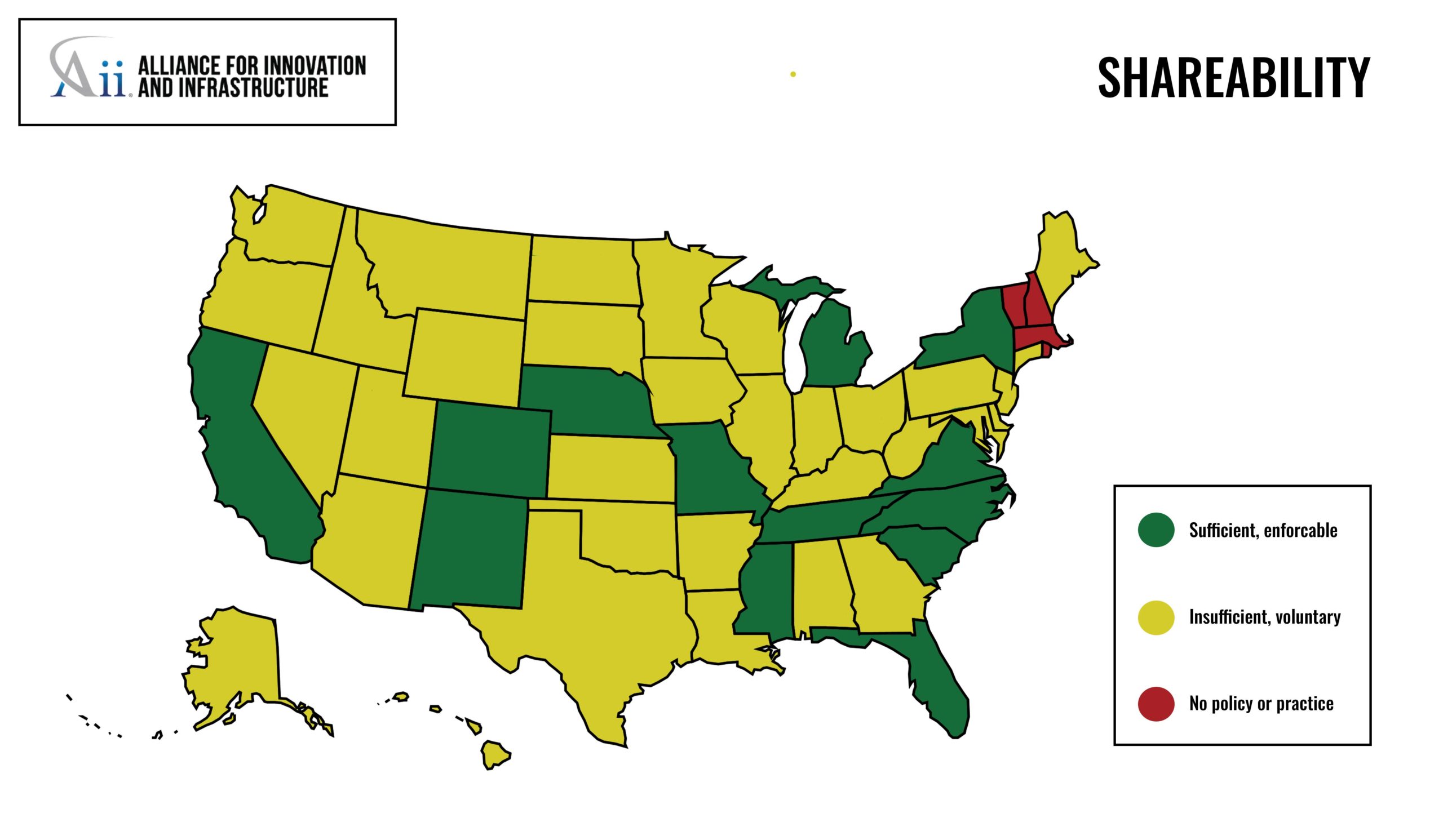
Shareability
Does the state require a common-access platform allowing all relevant parties to share information?
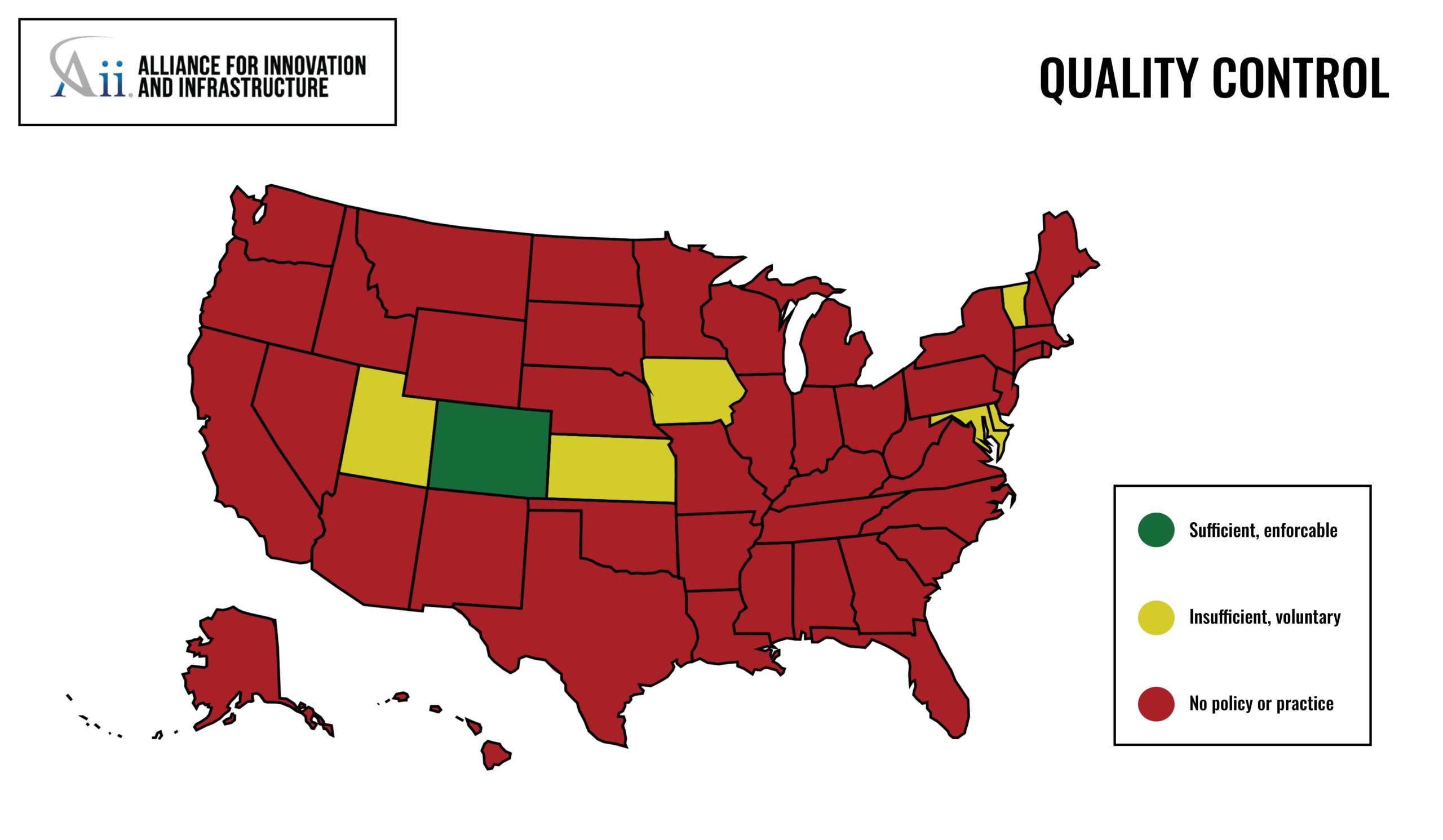
Quality Control
Does the state have a sufficient requirement for sharing enhanced information about the facilities at the excavation site with the excavator?
Additional Data
The following data has been sourced from the Common Ground Alliance (CGA) and cross referenced with our own analysis of each state’s laws. The following data maps display whether or not One-Call Membership, and White-Lining / Pre-Marking is required in each state.
While this information is not rated in our 2020 Damage Prevention Report Card, it is provided here to give readers a more comprehensive view of state approaches to damage prevention.
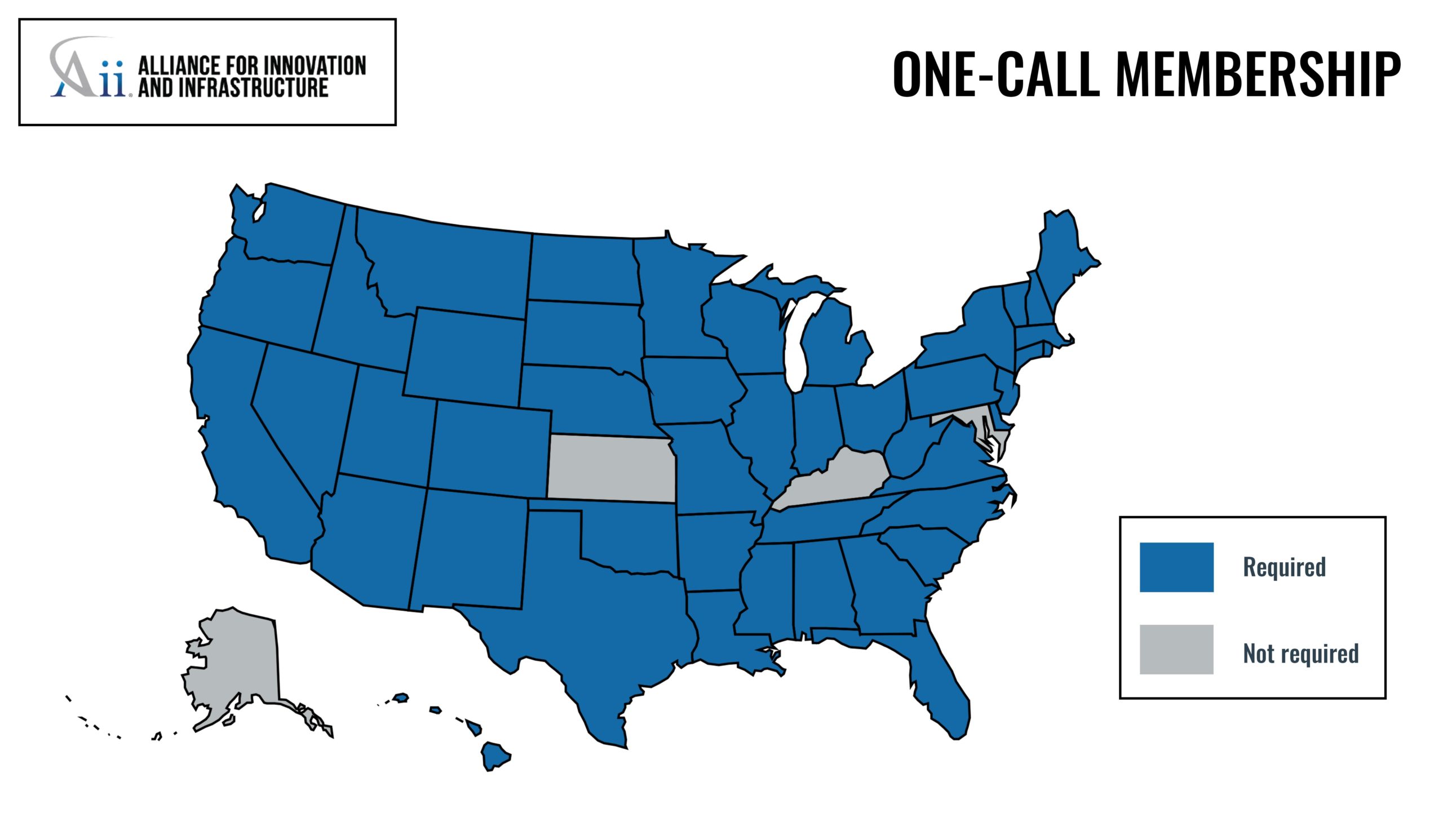
One-Call Membership
Most states require that all utilities – owning or operating pipelines, electricity, water, cable, telephone, Internet, or other facilities – become members of their respective One-Call center. This ensures that when an excavator calls 811, the One-Call center knows which utility operator to contact based on the location of the proposed excavation. Some states require membership based on mileage of underground facilities.
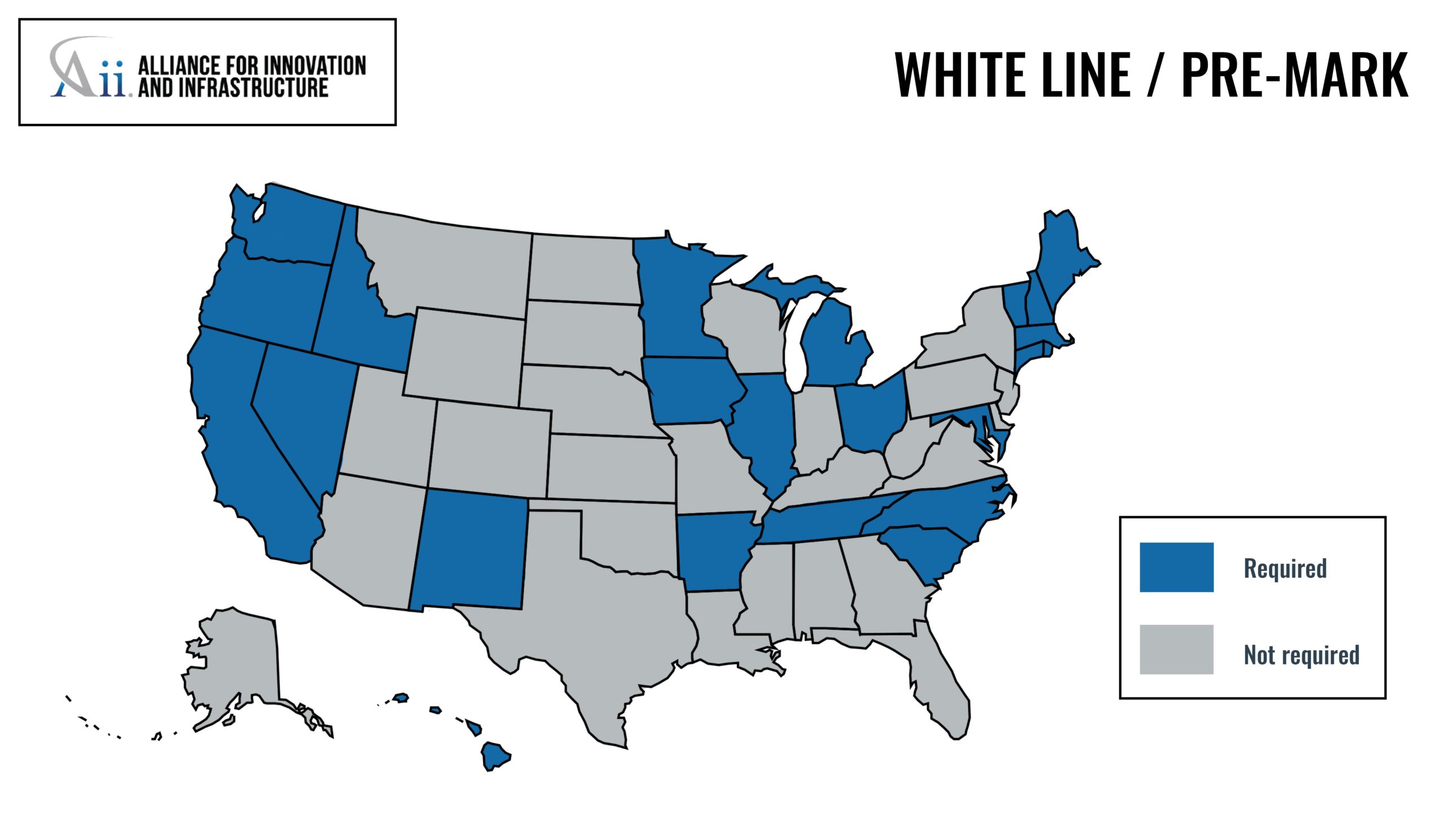
White Line / Pre-Marking
White-Lining or Pre-Marking is the practice of identifying a proposed excavation site before utility operators or locators visit a site to mark their underground facilities. This practice requires homeowners, excavators, or whoever is digging to mark or identify the area they plan to dig using white spray paint, stakes, or flags. Why white? Learn more here.
Read Our Other Reports
Damage Prevention is a key focus area for Aii. We are committed to tracking laws and best practices, studying incidents, and advancing innovative solutions to critical public policy challenges.
More on Damage Prevention
Click here to learn more about Damage Prevention.
